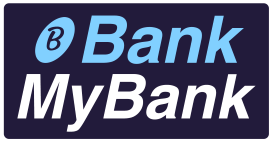Making deposits is essential to keeping a checking account active. Your checking account will run out of money if no deposits are made. You won’t be able to use your debit card to make payments, withdraw cash, or make purchases.
Whether you are depositing a check or cash, there are various ways to do so. Nevertheless, you must first get your deposit ready.
Flip a check over when you get one to deposit. On one end of the check, there are often a few lines that read, “Endorse Here.” Moreover, “Do not write or stamp below this line” may occasionally be seen. As seen here, be careful to sign your name on the check above that sentence. You can either sign your name after entering the other details or before.
On the back of a check, you must endorse your name. Any check that you attempt to deposit but is not endorsed will be rejected by the bank. You might also need to add “For Deposit Only” and the number of the account you are depositing the check into, depending on the bank and the deposit type. Make sure to record the amount you are depositing if you are depositing cash.
1. Visiting a branch in person to deposit money
The traditional method of depositing a check or cash is to go in person to your bank’s branch, stand in line, and provide the teller with the money and a deposit slip, which is typically available at a stand close to where the queue starts. You might notice deposit slips alongside your checks if you keep a checkbook. Here is an example:
The deposit slips that arrive with your checkbook have your account information on them, saving you the trouble of filling out your information on the bank’s generic deposit sheet. The deposit slips that are available at the bank will not As noted on the deposit slip, list each check by check number and amount. Put the total amount of your cash deposit on the line marked “cash.”
You might have to swipe your ATM card and/or show your photo ID when you get to the teller. After that, the teller will deposit your money into your account and, if you ask for one, give you a receipt.
Read More: What is Auto Sweep Facility and its Benefits?
2. Making withdrawals from an ATM
The procedure for endorsing a check while depositing money at an ATM is the same, except you won’t need to complete a deposit slip. Also, while you can use any ATM to withdraw cash, you’ll need to use an ATM from your own bank in order to deposit money. You might be able to make deposits at specific ATMs if your bank only accepts online transactions. ATMs typically allow you to deposit both checks and cash.
To access your account, insert your debit card and personal identification number (PIN) into the machine. Simply adhere to the instructions displayed on-screen to tell the computer which accounts to deposit your money into. The amount of your deposit will then typically be entered. Some ATMs don’t need you to do this because they’ll read your checks or count your bills as you input them; they’ll just ask you to double-check the amount before completing your deposit.
You will then either place your deposit in an envelope before inserting it into the ATM, depending on the ATM, or you will insert it directly into the ATM without an envelope. In case there is an issue with the way your deposit credits to your account—which is uncommon, but it’s better to be safe than sorry—get a receipt for it.
3. Making Deposits via Smartphone or the Internet
If you get the hang of it, using your smartphone to deposit a check is the most practical and simple option. Many banks offer mobile apps that let you deposit checks by taking a photo of the front and endorsed back using your phone’s camera, entering the check amount, and specifying which accounts the check should be deposited into.
The method for making deposits online is similar, but before you can submit your checks, you’ll need to scan them or transfer images of them from your camera or smartphone to your computer. The amount of time that you must store the paper checks will be specified by your bank. You can shred them when that period of time has gone.
4. Mailing Deposits
You can mail in checks (but not cash) for deposit if you are unable to visit an ATM or a branch and don’t want to use your smartphone or the internet to do so. To make it more challenging for someone to cash your check if they steal it from the mail, you’ll need to obtain your bank’s mailing address for deposits, endorse the check, and write “for deposit only” on the back. Include a deposit slip that has been filled out in your envelope.
Since your check must first go through the mail before it can be processed by your bank and become clear, mailing deposits is the slowest way to retrieve your deposits. There is a reason it is referred to as “snail mail.”
5. Getting direct deposit payments
If your company accepts this form of payment, you can also contribute money to your account by having your paycheck deposited directly into it. Both you and your employer may find life to be easier as a result of this arrangement.
You should have access to the money on payday if you receive your salary by direct deposit. As opposed to having to deposit a paper check, there won’t be a delay for you. If you direct deposit your paycheck, several banks will waive monthly fees or give you other benefits. Annuity payments, dividend and interest payments, pensions, bonuses, and commissions, Social Security benefits, payments for child support, and benefits from the Veterans Administration are a few more forms of payments that you can get through direct deposit.
Read More: Renault special discount in India up to Rs 1.30 lakh.
6. Electronic Transfer of Money from Another Account
Moreover, money can be moved between financial institutions using ACH transactions. For instance, you can utilize an ACH transfer to transfer funds from your checking account to your investment account if you have a brokerage account with one investment company and a checking account with another (or vice versa).
Another illustration of how you could electronically deposit money into your account is as follows: Let’s say you sell toys, clothes, and other goods from your home that you no longer want to make money using a PayPal account linked to an eBay seller account. You must first transfer the money you’ve earned from your PayPal account to your bank because you could wish to manage all of your banking transactions through your main checking account. By entering your banking information, you can accomplish this using the PayPal website or the PayPal mobile app.
With an online payment tool like Venmo, PayPal, or Popmoney, you can add money you’ve received from friends, relatives, or clients to your bank account. You can transfer the money to your checking account after it appears in that account. With these transfers, there may occasionally be a cost.





